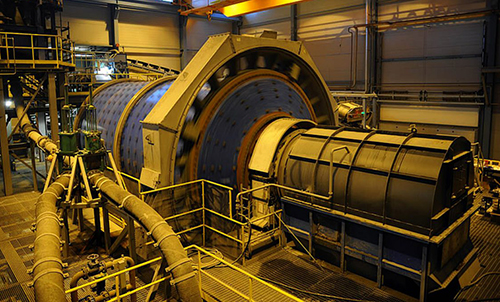How do you calculate grinding media in a ball mill?
Views: 1540 Update Date:Aug 14 , 2023
In the world of mineral processing, the grinding process is a critical step that prepares the ore for downstream processing stages. The ball mill is a robust and reliable alternative for cement and mineral processing industries, with the main objective of reducing the particle size. The mill consists of a rotating cylindrical shell filled with grinding balls, ranging from a few centimeters to several centimeters in diameter. As the mill rotates, the grinding media crushes and grinds the material inside, creating a fine powder.
The formula can be expressed as: B = (F80/K) ^ 0.5
Where:
* B represents the required ball size (mm),
* F80 is the feed size (80% passing size in micrometers),
* K is a constant that varies with the type of ore and mill characteristics.
Remember, achieving an accurate calculation requires precision in measurements and a solid understanding of the variables involved. Consulting with experts in the field can provide valuable insights and ensure reliable results.
Prev: What is the hardness of grinding media ball?
Next: Grinding steel balls play a crucial role in the mineral processi
Calculating Grinding Media
The calculation of grinding media in a ball mill involves three steps: measuring the weight of the mill feed, analyzing the feed, and incorporating the appropriate mathematical equation to determine the optimal size distribution of grinding balls.Step 1: Measure Mill Feed Weight
Begin by measuring the mill's feed charge, which typically consists of the material to be ground and the grinding media itself. This weight provides the basis for further analysis.Step 2: Analyze Mill Feed Composition
Determine the composition of the mill feed by categorizing it into different size fractions. This can be achieved through a sieve analysis, which separates particles based on size. The analysis reveals the amount of material in each size fraction.Step 3: Applying the Bond Formula
The Bond formula, developed by F.C. Bond in the early 20th century, is a widely used method for calculating the required grinding media size to achieve a target grind size. The formula involves factors such as the feed size, work index, and the desired product size. By incorporating these factors into the equation, you can determine the optimal grinding media size.The formula can be expressed as: B = (F80/K) ^ 0.5
Where:
* B represents the required ball size (mm),
* F80 is the feed size (80% passing size in micrometers),
* K is a constant that varies with the type of ore and mill characteristics.

Putting Theory into Practice
Now that you have a grasp of the calculation process, it's time to put theory into practice. Begin by collecting data on the mill feed and conducting a sieve analysis to determine the size distribution. With this information, apply the Bond formula to calculate the optimal grinding media size.Remember, achieving an accurate calculation requires precision in measurements and a solid understanding of the variables involved. Consulting with experts in the field can provide valuable insights and ensure reliable results.





